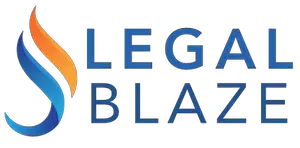Are Product Liability Cases Important?
Liebeck vs. McDonald’s Restaurants, also known as “The McDonald’s Hot Coffee Lawsuit”: In February 1992, 79-year-old Stella Liebeck suffered third-degree burns after spilling a cup of McDonald’s coffee on her lap. This incident occurred in a stationary car when she attempted to add sugar and cream to her coffee with the cup between her knees. The lid slipped, causing the spill. The injury sustained by Ms. Liebeck led to a $2.8 million jury decision, although this amount was later reduced, with her settling for $640,000 after appeals by McDonald’s. This case brought significant public scrutiny and debate over product safety and tort reform.
General Motors Faulty Ignition Switch Case: From 2000 through 2004, GM manufactured vehicles with a design flaw in the ignition switch, capable of shutting off the engine during driving and preventing airbags from deploying. This defect was linked to at least 124 deaths and nearly 300 injuries. It was later revealed that GM had been aware of this flaw for over 13 years but had not corrected or informed the public until much later. In response, GM initiated a recall of over 30 million vehicles and agreed to a settlement of over $900 million to cover deaths and injuries related to this issue.
Takata Airbag Recall: One of the most massive recalls in automotive history involves the Takata airbags, which affected over 40 million vehicles worldwide. Faulty inflators could rupture upon deployment, causing severe injuries or even death by projecting metal fragments. Initially discovered through secret testing in 2004, this defect wasn’t publicly addressed by Takata until ten years later, leading to multiple deaths and hundreds of injuries. The repercussions saw the company forced into bankruptcy, facing fines and restitution payments topping $1 billion.
Bullock vs. Philip Morris: Big Tobacco on Trial: In a landmark ruling in 2002, tobacco company Philip Morris (now Altria Group) was sued by Betty Bullock, a lung cancer patient who attributed her illness to decades of smoking. The jury awarded her $28 billion in punitive damages and $850,000 in compensatory damages for Philip Morris’s failure to warn about the dangers of tobacco. This staggering penalty was later reduced to $28 million on appeal. This case marked a critical turn in public and legal challenges against the tobacco industry.
Dow Corning Silicone Breast Implants: In this controversial case, Dow Corning faced immense litigation due to claims that their silicone breast implants were rupturing, causing systemic health problems. Thousands of lawsuits were filed against the company, leading them to file for Chapter 11 bankruptcy in 1995. Eventually, Dow Corning agreed to a $3.2 billion settlement to resolve claims from injured parties.
Each of these cases underscores a failure in product design or manufacturing and corporate responsibility toward consumer safety and truthful disclosure. The extensive media coverage and judicial scrutiny significantly impacted each company concerning financial settlements and stringent regulatory changes affecting industry standards.

Legal Framework
In product liability legal discourse, three major theories of liability form the backbone of litigation: negligence, strict liability, and breach of warranty. Each serves a distinctive role in protecting consumers by holding manufacturers and sellers accountable for harm caused by defective products.
Negligence requires proving that a manufacturer failed to exercise reasonable care in a product’s design, production, or distribution, which subsequently leads to injury or damage. This hinges on demonstrating a duty owed to the consumer by the manufacturer, a breach of this duty, causation, and the occurrence of actual damages. For instance, in the General Motors ignition switch scenario, part of the litigation focused on establishing that GM had prior knowledge of the defect yet failed to take corrective action—a classic case of negligence.
Strict liability, distinct from negligence, does not require the plaintiff to prove the manufacturer’s fault or intention. Rather, it is sufficient to show that the product was defective and that this defect caused harm while the product was being used as intended. For instance, in the scenario involving Takata airbags, the fatalities and injuries resulted directly from a product defect (faulty inflators), which is an essential consideration for strict liability claims.
Finally, breach of warranty revolves around the failure of a product to meet the terms stated in its warranty, which can be expressed (explicitly stated) or implied (inherent in the sale of the product). This legal angle expands on contract law principles, where the seller guarantees certain product quality and functionality conditions. The silicone breast implant cases exemplify this, as grievances were raised over the implants not performing as safely as consumers had warranted.
Plaintiffs bear the burden of proof in product liability cases, meaning they must convincingly demonstrate that the product was defective, directly leading to their injury or damage. Systems of proving a claim also necessitate that the product has not been altered in a way that could cause the injury post its sale.
Impact on Corporate Policies
Following high-profile product liability lawsuits, a ripple effect often prompts companies to adopt more stringent safety standards and review internal policies concerning product testing and disclosures. These regulatory reactions sometimes extend beyond the companies directly involved in the lawsuits and influence entire industries.
For example, the McDonald’s hot coffee case had a broader impact on how companies handle product warnings. After the verdict, many fast-food chains adjusted the temperatures at which they serve coffee and revamped their cup designs to enhance safety and prevent similar incidents. Additionally, this case spurred debates that ultimately led to clearer and more visible warning labels on potentially hazardous consumer products.
The effects of the General Motors ignition switch disaster are another salient point. In response to the intense public scrutiny and legal consequences that followed, GM launched massive internal reviews of their vehicle safety procedures, ultimately leading to broad improvements across the automotive industry in how car recalls are handled. Notably, it influenced the National Highway Traffic Safety Administration’s decision to be more stringent in monitoring automotive products, adjusting its policies for quicker responses to potential safety issues.
Similarly, the sweeping recalls of Takata airbags reshaped how automotive companies approach safety measures and collaborate with part suppliers. These manifestations were not limited to the companies directly affected but spread across all brands using airbags in their models. It compelled manufacturers to implement more rigorous testing processes for safety devices and forced a reevaluation of supplier relationships, emphasizing transparency and safety in product components.
The global lawsuits against Dow Corning, a silicone breast implant manufacturer, highlighted the crucial need for thorough research and disclosure regarding medical products. The gravity of this case fostered enhancements in the pharmaceutical and cosmetics industries regarding how implantable devices are tested and marketed. Regulatory agencies increased their surveillance of such products, tightening approval processes and requiring more comprehensive clinical data to ensure human health and safety.

Economic and Social Consequences
The financial repercussions that befell companies embroiled in product liability lawsuits underscore the risks of neglecting product safety. These costs come in various forms:
- Hefty settlements to compensate victims
- Money sunk into recalls and corrective actions
- Penalties imposed by regulatory bodies
- Legal fees
Such payouts strain corporate finances and can trigger a decline in shareholder value, upset investors, and damage profitability.
Equally consequential is the intangible toll these cases can exact on a company’s reputation. Once eroded, public trust can be exceptionally hard to recover. Consumer confidence is paramount in any industry, and revelations of negligence or deceit in safety practices can damage a company’s brand image irreparably. This sentiment shift often results in immediate drops in sales and can alter market dynamics long-term.
High-profile product liability cases frequently set precedents leading to industry-wide consumer behavior changes. Awareness grows with each reported mishap, encouraging more informed decision-making among consumers. People begin scrutinizing products more skeptically, demanding higher transparency and safety assurances from manufacturers. The ripple effects can also usher in a rise in activism and advocacy for stricter regulatory oversights, fostering a more proactive approach to consumer rights and protection.
Beyond individual consumer choices, community and societal perceptions evolve following these legal showcases. They breed a greater collective consciousness about product safety, leading communities to rally for more robust regulatory frameworks and system reforms. This groundswell can force industries to innovate safer production techniques and adopt advanced technologies to prevent future failures.
In the wake of these monumental cases, companies often revamp their operational and strategic approaches. Quicker corporate responses to safety issues, even preemptive recalls, are now more common. These endeavors alleviate the direct costs associated with potential lawsuits and work towards rebuilding company credibility and consumer trust. Through such actions, businesses illustrate a commitment to upholding high safety standards and ethical practices, which can ultimately play a vital role in regaining public favor and stabilizing market positions.
Future of Product Liability
Looking ahead, the landscape of product liability is poised to undergo profound changes, driven largely by advancements in technology and the expansion of global markets. As products become increasingly complex and integrated with digital capabilities, the potential for new types of failures expands, suggesting a foreseeable increase in liability claims. This evolution calls for a reassessment of traditional liability frameworks to address the novel challenges of smart devices, Internet of Things (IoT) applications, and artificial intelligence (AI).
Technology introduces a layer of complexity to product safety, primarily due to software errors and cyber vulnerabilities. For instance, smart appliances that rely on internet connectivity to function can malfunction or become unsafe due to software bugs or hacking incidents. Here, the question of liability extends not only to the physical manufacturers but also potentially involves software developers and service providers—entities traditionally considered peripheral in conventional product liability scenarios.
Globalization exerts another transformative force on these dynamics. As companies increasingly source materials and labor from across borders and sell to international markets, the scope of regulations that govern product safety expands and diversifies. This global supply chain introduces variability in quality control and regulatory compliance, making it more difficult to trace sources of defects. International trade agreements often include provisions that limit or dictate the terms under which a company can be liable for damages, substantially altering the strategic landscapes of multinational litigation.
Consumer protection laws have witnessed gradual yet consistent updates to encapsulate the digital age’s nuances. For example, EU regulations now demand higher transparency concerning AI’s decision-making processes, directly affecting AI-powered products regarding consumer safety and related disclosure requirements. Similarly, data privacy laws, like the General Data Protection Regulation (GDPR), indirectly influence product design requirements, mandating enhanced security features to prevent breaches that could harm users.
The future will also likely see a sharpened focus on pre-emptive measures. Incorporating advanced predictive analytics and machine learning technologies can assist manufacturers in identifying potential defects before products hit the market. This proactive approach aims to minimize liability risks and aligns with a broader commitment to corporate social responsibility—protecting end-users and sustaining a company’s reputation and market position.
As platforms like blockchain begin to permeate supply chains, they bring about a new lever for liability mitigation: transparency. Companies implement blockchain solutions to create immutable records of production processes, material sources, and distribution pathways. This streamlines recall strategies when issues arise and bolsters defenses in litigation by providing clear evidence of compliance and diligence.
In essence, the future of product liability law beckons a transformation that parallels or exceeds technological innovations and international commercial practices. To address and aptly confront emerging risks, companies must enhance adaptive strategies that contemplate minimizing liability exposure and harnessing technology to elevate product safety and reliability internationally. This conciliatory adaptation between technological advances and legal frameworks will pivot key actors towards a synthesis where consumer protection, corporate viability, and liability awareness occupy mutually reinforcing positions in global markets.
- Liebeck v. McDonald’s Restaurants. No. D-202 CV-93-02419, 1995 WL 360309 (Bernalillo County, N.M. Dist. Ct. August 18, 1994).
- In re: General Motors LLC Ignition Switch Litigation. No. 14-MD-2543 (JMF), 2020 WL 6266195 (S.D.N.Y. Oct. 23, 2020).
- In re: Takata Airbag Products Liability Litigation. No. 1:15-md-02599-FAM, 2017 WL 2406711 (S.D. Fla. June 2, 2017).
- Bullock v. Philip Morris USA, Inc. 198 Cal. App. 4th 543 (2011).
- In re Dow Corning Corp. 244 B.R. 634 (Bankr. E.D. Mich. 1999).








